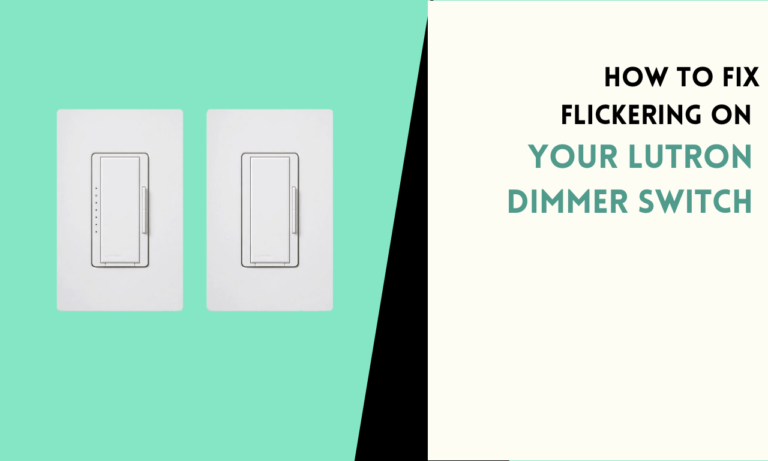Matter vs Thread: What’s the Future of Smart Home Connectivity?
Smart homes need good connections to work smoothly. Matter and Thread are two new technologies that promise better speed and easier setups. Both have their strengths, but only one might lead the future of smart home connectivity.
Here’s what you need to know to make the right choice.
What is Matter?

Matter is a smart home standard created to improve compatibility across different brands of devices. Its goal is to help you avoid the frustration of buying a gadget that doesn’t work with your existing setup. Matter works by offering a universal language for devices to communicate.
How Matter Works?
- Interoperability Across Brands: Matter bridges gaps between ecosystems like Alexa, Google Home, and Apple HomeKit, so devices can operate under one framework.
- IP-Based Communication: It uses Internet Protocol (IP) for reliable and secure communication.
- Secure and Reliable: Matter has robust security features to protect your data and ensure devices communicate without issues.
Benefits of Matter:
- Ease of Use: You no longer need to worry about brand compatibility.
- Better User Experience: Devices connect faster and work consistently.
- Wide Industry Support: Leading brands like Amazon, Apple, and Google support Matter, ensuring its widespread adoption.
What is Thread?

A networking protocol called Thread was created to enable direct communication between your smart home’s gadgets. In contrast to conventional configurations that depend on Bluetooth or Wi-Fi, Thread establishes a dependable, low-power network that runs on its own.
How Thread Works?
- Mesh Networking: Rather than depending on a central hub, Thread creates a network in which devices connect directly with one another.
- Low-Power Communication: Designed to consume less energy, it is perfect for devices that run on batteries.
- Reliability: Other devices in the mesh can continue interact via alternate path in the event that one fails.
Benefits of Thread:
- Energy Efficiency: Designed for devices like sensors and locks that require minimal power.
- Reliable Connectivity: The mesh network ensures stable communication, even in large homes.
- Scalability: Adding new devices doesn’t reduce network performance.
Key Differences Between Matter and Thread
While their often work together, Matter and Thread play different roles in the connection of smart homes.
Focus and Functionality:
- Matter: Focuses on interoperability between devices and ecosystems.
- Thread: Provides a reliable, low-power network for communication.
Use Cases:
- Matter: Ideal for creating a unified experience across multiple ecosystems.
- Thread: Best suited for ensuring smooth communication between devices within a single network.
Compatibility:
- Matter: Works with Wi-Fi, Ethernet, and Thread to connect devices.
- Thread: Functions as a foundational layer for communication, often used by Matter.
How Matter and Thread Work Together?
Matter and Thread are complementary, with Matter often using Thread as its communication backbone.
Integration Process:
- Matter Manages Communication: It ensures devices from different brands work together.
- Thread Provides the Network: It creates a reliable and low-power mesh network for devices to communicate.
Benefits of Integration:
- Unified and Reliable Smart Homes: The combination ensures devices are easy to connect and remain stable.
- Future-Proofing: Both protocols are backed by leading brands, ensuring long-term relevance.
- Improved Performance: Combining Matter’s interoperability with Thread’s mesh network offers a seamless experience.
Advantages of Matter and Thread for Smart Homes
Using Matter and Thread together creates a smart home ecosystem that is efficient, secure, and future-ready.
Matter’s Advantages:
- Simplified Setup: You don’t need separate apps for different devices.
- Cross-Brand Compatibility: Devices from various brands work together effortlessly.
- Strong Security Standards: Protects your data with encryption.
Thread’s Advantages:
- Efficient Power Use: Ideal for devices that run on batteries.
- Reliable Performance: Ensures smooth communication even if a device fails.
- Expandable Networks: Handles large numbers of devices without issues.
The Future of Smart Home Connectivity
Matter and Thread are set to transform how smart homes function. Their combined capabilities offer a seamless and reliable experience for users.
Predictions for Matter:
- Widespread Adoption: More brands are expected to adopt Matter, creating a unified ecosystem.
- Improved User Experience: Setup processes and device compatibility will continue to improve.
- Standardization Across Brands: Matter will likely become the universal standard for smart home communication.
Predictions for Thread:
- Better Energy Efficiency: Advances in Thread technology will make smart homes more energy-efficient.
- Broader Integration: Thread will integrate with more devices, making it a go-to protocol for low-power applications.
- Scalable Solutions: Larger homes and complex setups will benefit from Thread’s reliable mesh networking.
FAQ
1. How does Thread improve smart home networks?
Thread creates a direct, low-power, and stable connection between your smart home devices. It doesn’t rely on Wi-Fi, so even if your internet goes down, your gadgets stay connected. This makes your setup more reliable and efficient.
2. Do Matter and Thread need separate hubs?
Matter and Thread are built to reduce the need for multiple hubs. With compatible devices, you can connect them directly to your system without adding extra hardware, simplifying your setup.
3. Can Matter and Thread work together in one smart home?
Yes, Matter and Thread work well together. Matter ensures compatibility between brands, while Thread provides the reliable network needed for smooth communication. This combination creates a seamless experience for your smart home.

Scott is a husband, father, passionate writer and owner of homeautomationtalks.com and seniorgadgetguide.com. He loves to spend time in the garden, walking in the woods, cooking, is an avid gamer and most of all a tech enthusiast, which makes him the default tech support for his parents. 🙂






